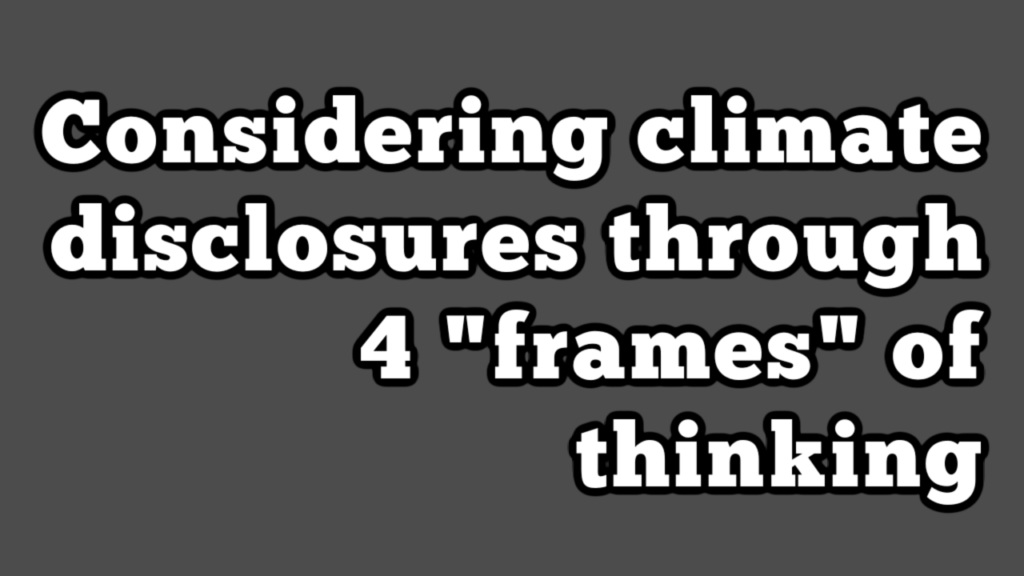Considering climate disclosures through 4 “frames” of thinking

Here’s the intro from this note by Harald Walkate:
I’ve done a lot of thinking about the sense & nonsense of emissions disclosure lately and I’m making incredible progress. That is to say, I haven’t come up with any definitive answers yet. But I think I’ve come up with the definitive questions. With some help from the lovely people at MJ Hudson where I did a training last Friday, giving me the opportunity to ‘test-drive’ this slide.
These questions will allow you to decide for yourself whether emissions disclosure initiatives are a great idea (i.e., deserve an A), a bad idea (i.e., deserve a D), or a terrible idea (i.e., deserve an F).
This, of course, also depends on your motivation:
– Better investment risk management?
– Reducing emissions?
– Selling emissions measurement services and data?
– Selling ESG/green funds?The questions are categorized in four different ‘frames’ of thinking:
– Accuracy: a lot of people are obsessed with getting more accurate data, but is that even possible? How accurate is needed? And how accurate is the data that we have already? And what are the incentives of those advocating rules that require more accuracy?
– Attributability: emissions disclosure rules are based on the assumption that emissions should be attributed, or assigned, to individual companies. But can they? And is it even needed?
– Agency: emissions disclosure assumes that investors and companies have agency to act – but do they? And, if not, who does?
– Distraction: emissions disclosure proponents typically say this is the highest priority for companies and investors today. And that this is a necessary building block for other, future, actions. But is it? Or is our preoccupation with emissions disclosure drawing our attention away from other – perhaps higher – priorities?
